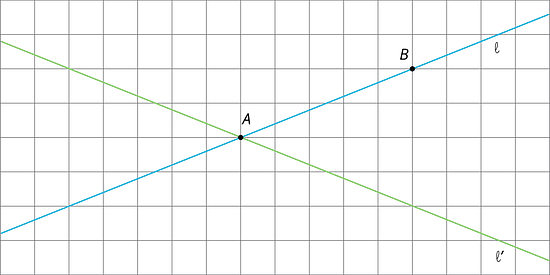Lesson 9Moves in Parallel
Let’s transform some lines.
Learning Targets:
- I can describe the effects of a rigid transformation on a pair of parallel lines.
- If I have a pair of vertical angles and know the angle measure of one of them, I can find the angle measure of the other.
9.1 Line Moves
For each diagram, describe a translation, rotation, or reflection that takes line to line . Then plot and label and , the images of and .
9.2 Parallel Lines
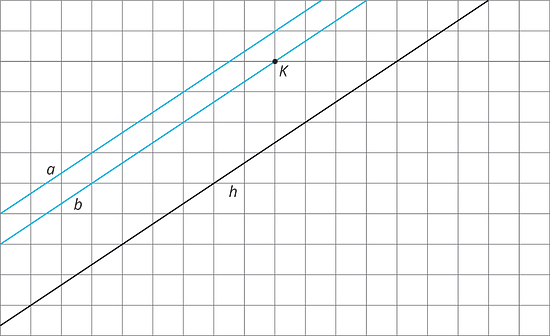
Use a piece of tracing paper to trace lines and and point . Then use that tracing paper to draw the images of the lines under the three different transformations listed.
As you perform each transformation, think about the question:
What is the image of two parallel lines under a rigid transformation?
-
Translate lines and 3 units up and 2 units to the right.
- What do you notice about the changes that occur to lines and after the translation?
- What is the same in the original and the image?
-
Rotate lines and counterclockwise 180 degrees using as the center of rotation.
- What do you notice about the changes that occur to lines and after the rotation?
-
What is the same in the original and the image?
-
Reflect lines and across line .
- What do you notice about the changes that occur to lines and after the reflection?
- What is the same in the original and the image?
Are you ready for more?
When you rotate two parallel lines, sometimes the two original lines intersect their images and form a quadrilateral. What is the most specific thing you can say about this quadrilateral? Can it be a square? A rhombus? A rectangle that isn’t a square? Explain your reasoning.

9.3 Let’s Do Some 180’s
- The diagram shows a line with points labeled , , , and .
-
On the diagram, draw the image of the line and points , , and after the line has been rotated 180 degrees around point .
-
Label the images of the points , , and .
-
What is the order of all seven points? Explain or show your reasoning.

-
- The diagram shows a line with points and on the line and a segment where is not on the line.
-
Rotate the figure 180 degrees about point . Label the image of as and the image of as .
-
What do you know about the relationship between angle and angle ? Explain or show your reasoning.

-
- The diagram shows two lines and that intersect at a point with point on and point on .
-
Rotate the figure 180 degrees around . Label the image of as and the image of as .
-
What do you know about the relationship between the angles in the figure? Explain or show your reasoning.

-
Lesson 9 Summary
Rigid transformations have the following properties:
-
A rigid transformation of a line is a line.
-
A rigid transformation of two parallel lines results in two parallel lines that are the same distance apart as the original two lines.
-
Sometimes, a rigid transformation takes a line to itself. For example:
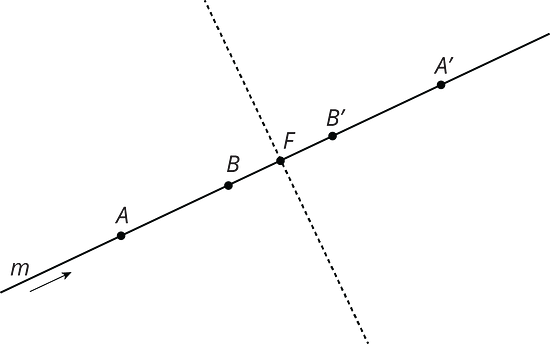
-
A translation parallel to the line. The arrow shows a translation of line that will take to itself.
-
A rotation by around any point on the line. A rotation of line around point will take to itself.
-
A reflection across any line perpendicular to the line. A reflection of line across the dashed line will take to itself.
-
These facts let us make an important conclusion. If two lines intersect at a point, which we’ll call , then a rotation of the lines with center shows that vertical angles are congruent. Here is an example:
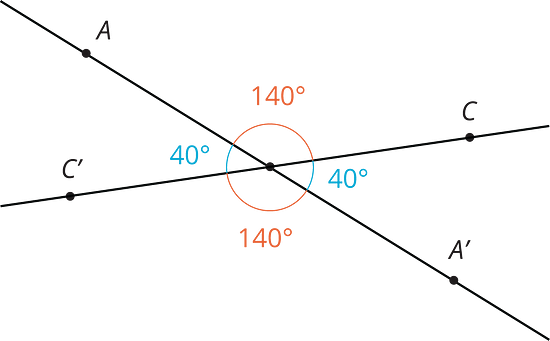
Rotating both lines by around sends angle to angle , proving that they have the same measure. The rotation also sends angle to angle .
Glossary Terms
Vertical angles are opposite angles that share the same vertex. They are formed by a pair of intersecting lines. Their angle measures are equal.
For example, angles and are vertical angles. If angle measure , then angle must also measure .
Angles and are another pair of vertical angles.
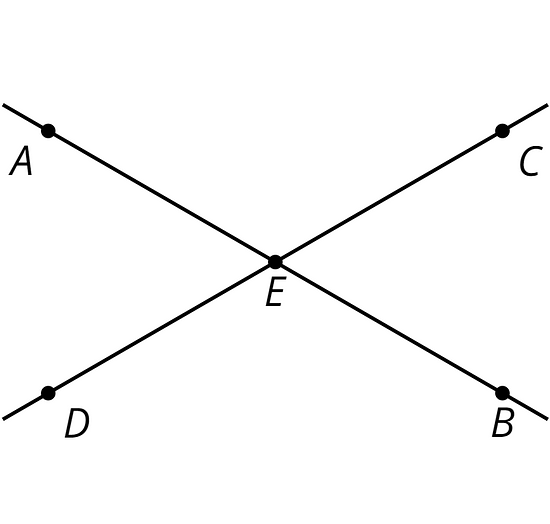
Lesson 9 Practice Problems
- Draw parallel lines and .
- Pick any point . Rotate 90 degrees clockwise around .
- Rotate 90 degrees clockwise around .
- What do you notice?
Use the diagram to find the measures of each angle. Explain your reasoning.

Points and are plotted on a line.

- Find a point so that a 180-degree rotation with center sends to and to .
- Is there more than one point that works for part a?
In the picture triangle is an image of triangle after a rotation. The center of rotation is .
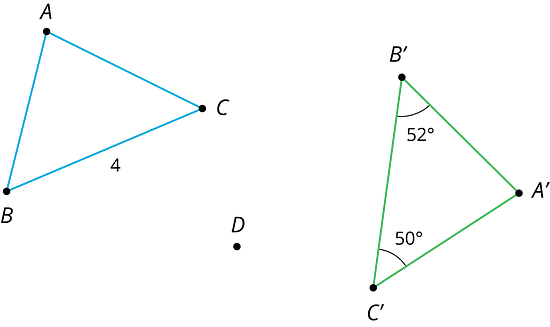
- What is the length of side ? Explain how you know.
- What is the measure of angle ? Explain how you know.
- What is the measure of angle ? Explain how you know.
The point is rotated 180 degrees counterclockwise using center . What are the coordinates of the image?

